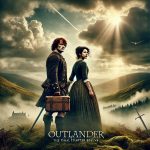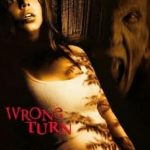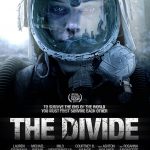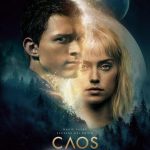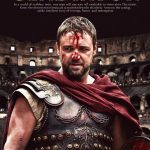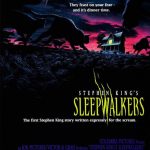The Lighthouse (2019)
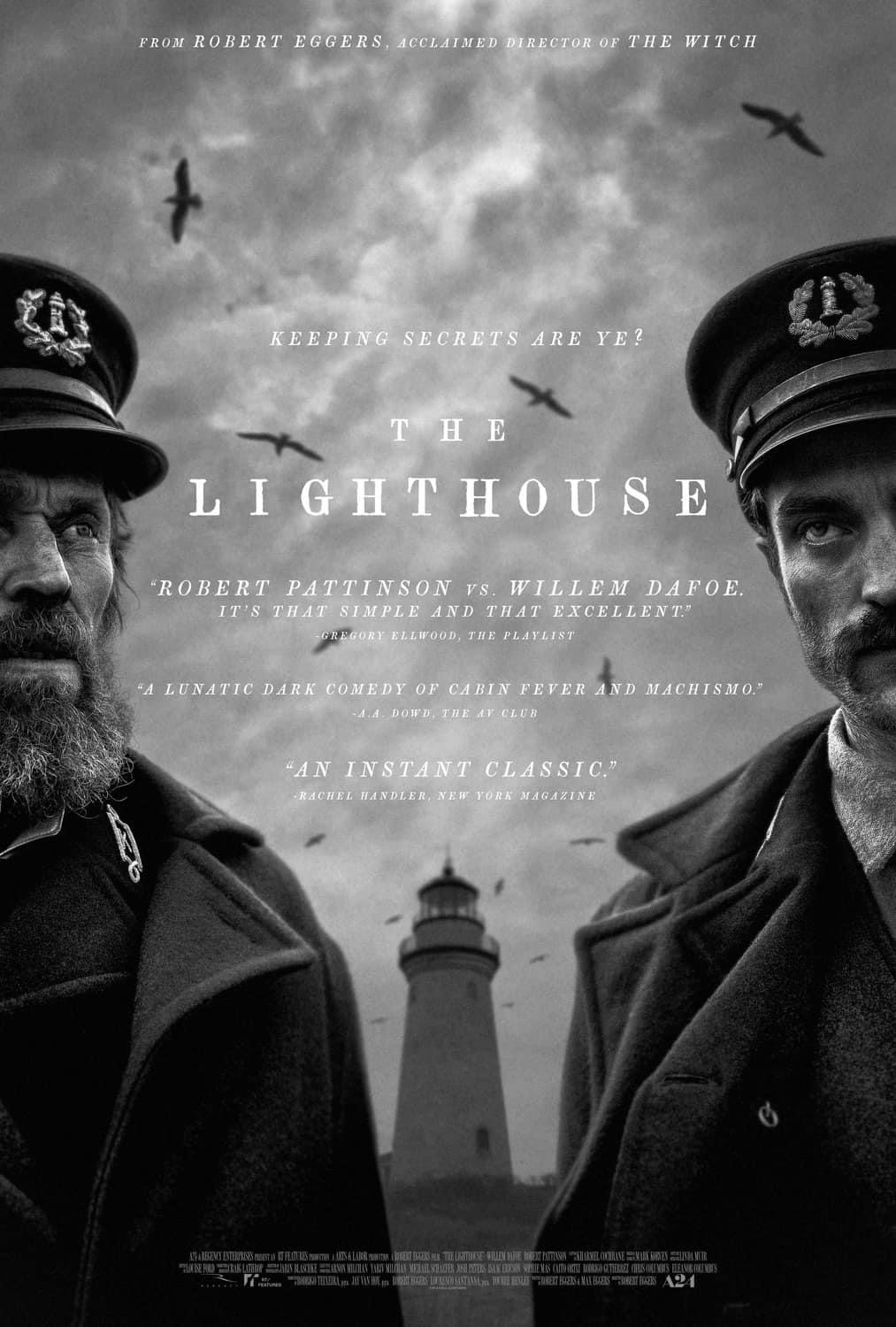
The Lighthouse (2019) is a masterfully crafted psychological horror film directed by Robert Eggers, whose debut film The Witch established him as a distinctive voice in atmospheric horror. Known for his meticulous approach to historical authenticity and layered, symbolic storytelling, Eggers takes viewers on an intense journey into isolation, madness, and the supernatural. Set in the 1890s and shot in stark black-and-white, the film follows two lighthouse keepers stationed on a desolate New England island as they descend into paranoia and madness.
Starring Willem Dafoe as the grizzled lighthouse keeper Thomas Wake and Robert Pattinson as the young, mysterious Ephraim Winslow, The Lighthouse explores themes of power, masculinity, and existential dread. The film’s unique visual style, claustrophobic setting, and powerful performances have earned it critical acclaim and cemented it as one of the most striking and unforgettable psychological horror films of the 21st century.
Suggested videos for you:
Plot Summary and Themes
The film opens with Ephraim Winslow arriving on a remote island to work under the supervision of the senior keeper, Thomas Wake. Wake is a domineering, superstitious man who assigns Winslow grueling menial tasks while reserving the night shifts tending the lantern for himself. Over time, Winslow grows increasingly resentful of Wake’s authority and becomes obsessed with the mysterious light atop the lighthouse, which Wake forbids him from approaching.
Isolated and battling harsh weather, the men’s relationship becomes strained and volatile, with Wake’s authority clashing against Winslow’s simmering rebelliousness. Their descent into madness is heightened by bizarre hallucinations, eerie visions of mythical creatures like mermaids, and strange events that blur the line between reality and nightmare. Winslow begins to unravel, haunted by guilt from a dark incident in his past, and both men are consumed by their struggle for power and control.
Thematically, The Lighthouse delves into the nature of isolation, the destructive power of guilt, and the psychological toll of authoritarian dominance. It also explores mythological and psychoanalytic themes, particularly around masculinity, punishment, and desire. Winslow and Wake’s interactions embody a constant struggle between submission and rebellion, echoing primal conflicts and a sense of existential futility. The lighthouse itself becomes a powerful symbol of unattainable knowledge, forbidden power, and divine punishment.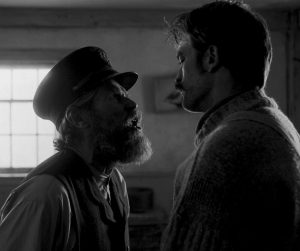
Characters and Performances
Willem Dafoe and Robert Pattinson deliver intense, transformative performances that elevate the film’s psychological depth. Dafoe’s Thomas Wake is a complex figure—a gruff, superstitious seaman who adheres to a strict, almost ritualistic code. His portrayal captures a mix of arrogance, charisma, and eeriness, making him both repulsive and magnetic. Dafoe brings a theatrical, almost Shakespearean quality to Wake’s monologues, delivering lines in an authentic 19th-century dialect with chilling conviction. Wake is both an authority figure and a tormentor, a man whose rigid adherence to hierarchy hides a broken psyche.
Pattinson’s portrayal of Ephraim Winslow is equally impressive, capturing his character’s descent from reserved newcomer to tormented, frenzied maniac. Initially quiet and reserved, Winslow is haunted by past guilt and struggles with a sense of inadequacy. Pattinson conveys Winslow’s internal torment through subtle facial expressions and body language, skillfully revealing his character’s vulnerability and anger. As Winslow’s mental state deteriorates, Pattinson’s performance becomes increasingly raw and visceral, capturing the character’s confusion, desperation, and rage. His interactions with Dafoe showcase a powerful dynamic, oscillating between camaraderie, rivalry, and outright hostility.
The tension between Winslow and Wake drives much of the film’s psychological horror. Their power struggle is more than just a clash of personalities—it is a descent into primal instincts and a battle for dominance, both over each other and over their own fears and desires. As the line between reality and hallucination blurs, Winslow and Wake’s relationship becomes an intense, twisted dance of dependence and hatred.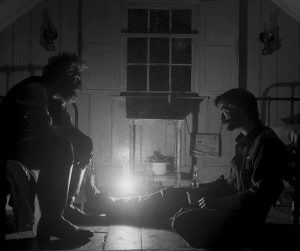
Cinematography and Visual Style
One of the most distinctive aspects of The Lighthouse is its visual style, which recalls the look of early 20th-century cinema. Shot in black-and-white on 35mm film in a nearly square 1.19:1 aspect ratio, the film feels claustrophobic and constrained, mirroring the characters’ confinement on the island. The monochrome visuals enhance the stark, bleak atmosphere of the story, stripping away distractions and immersing the viewer in a world of shadow and light.
Cinematographer Jarin Blaschke’s work is nothing short of masterful. The high-contrast lighting, deep shadows, and harsh whites create an unsettling, dreamlike quality that adds to the film’s otherworldliness. The island, the lighthouse, and the crashing sea are rendered with a haunting beauty, emphasizing the isolation and hostility of the environment. Every frame feels meticulously composed, with the camera often lingering on unsettling details—a dead seagull, ominous waves, or Winslow’s haunted expression.
The visual style also supports the film’s mythological themes. The towering, phallic shape of the lighthouse itself becomes a symbol of power and forbidden knowledge. The fog and storms that envelop the island serve as manifestations of the characters’ psychological states, adding an almost supernatural aura to the island and its environs. These visual elements create a sense of entrapment and dread, pulling the viewer into the characters’ claustrophobic, oppressive world.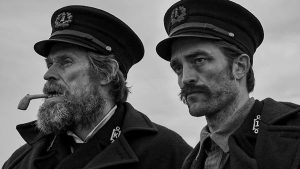
Sound Design and Score
The sound design of The Lighthouse is equally immersive, with an emphasis on ambient sounds that heighten the sense of isolation and unease. The constant blaring of the foghorn, the crashing waves, and the howling wind are relentless reminders of the characters’ confinement, amplifying their sense of dread. The foghorn becomes an almost sentient presence, mirroring the characters’ psychological descent as it drones on incessantly, giving the island an ominous, malevolent quality.
The score by Mark Korven is sparse yet powerful, using haunting, dissonant tones that reinforce the film’s unsettling atmosphere. The music blends seamlessly with the natural sounds, often punctuating scenes with a sense of foreboding. The soundscape contributes to the sense of unreality and dread, making the viewer feel trapped alongside the characters in their hellish environment.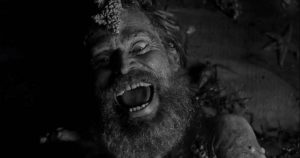
Symbolism and Mythological Allusions
Eggers infuses The Lighthouse with a rich tapestry of symbolism and mythological allusions. The lighthouse itself is a symbol of forbidden knowledge, drawing comparisons to the Greek myth of Prometheus, who defied the gods by stealing fire and was punished with eternal torment. Winslow’s obsession with the light becomes a metaphor for the human desire to transcend limits and access forbidden truths, even at the cost of madness or destruction.
Mermaids and sea creatures appear as eerie, seductive visions, embodying both Winslow’s loneliness and repressed sexual desires. These hallucinations blur the line between reality and fantasy, suggesting that the characters’ experiences are as much about internal struggles as they are about external events. Winslow’s visions can be seen as manifestations of his guilt, his need for redemption, and his fear of punishment.
The power struggle between Wake and Winslow also has psychoanalytic undertones, touching on themes of masculinity, dominance, and submission. Wake’s insistence on control and his disdain for weakness reflect societal pressures around male identity, while Winslow’s resistance and eventual rebellion suggest the futility of conformity. Their interactions explore primal instincts—survival, fear, and desire—creating an intense psychological study of two men spiraling into mutual destruction.
Criticisms
The Lighthouse is not a film for everyone. Its slow pacing, abstract themes, and often ambiguous narrative can make it challenging and even alienating. The film leans heavily on mood and atmosphere, sometimes at the expense of conventional storytelling. Viewers seeking a clear, linear plot may find the film’s surreal elements frustrating, as much of the story is left open to interpretation.
The dialogue, while authentic and poetic, is delivered in dense, archaic dialects, which can be difficult to follow at times. Eggers’s dedication to historical accuracy adds a level of authenticity, but some may find the language alienating, particularly as it contributes to the film’s overall sense of disorientation.
Conclusion
The Lighthouse is a bold, uncompromising film that explores isolation, madness, and the human desire for knowledge and power through a hallucinatory and claustrophobic lens. Its unique visual style, haunting sound design, and extraordinary performances by Willem Dafoe and Robert Pattinson make it a cinematic experience that lingers long after the credits roll. Eggers’s direction, combined with his commitment to historical authenticity and mythological depth, elevates the film to a level of psychological horror that is as thought-provoking as it is unsettling.
Though it may not appeal to all audiences, The Lighthouse stands as a testament to Eggers’s vision and ambition. It is a haunting, atmospheric journey into the depths of the human psyche, where reality blurs with hallucination, and light and darkness intertwine. For those willing to venture into its eerie, storm-lashed world, The Lighthouse offers a visceral, unforgettable experience that cements its place as a modern classic in psychological horror.


